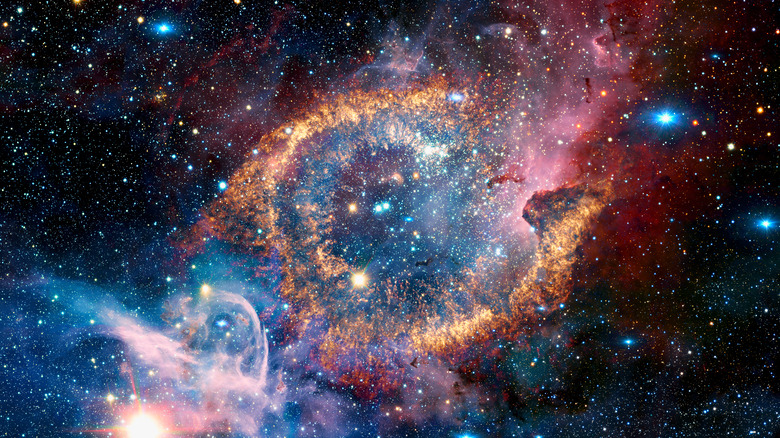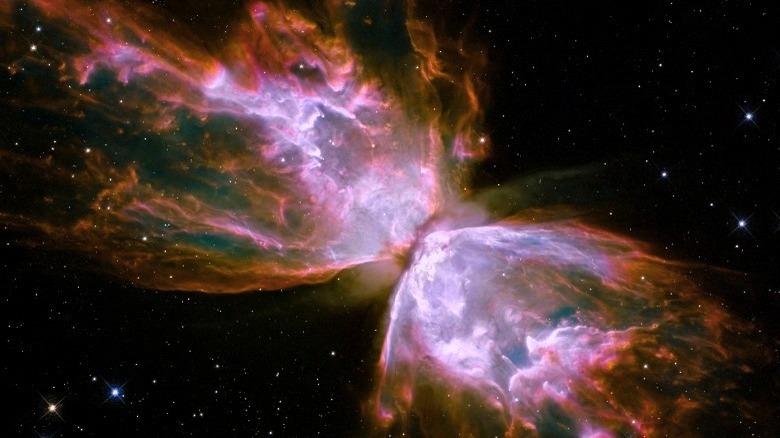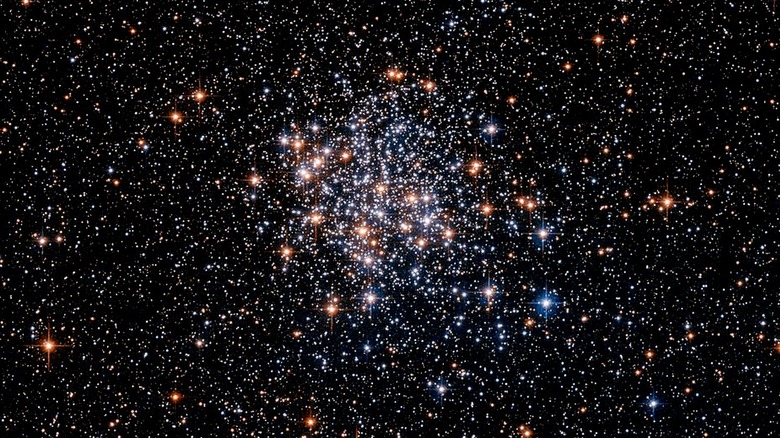This Is How A Star Becomes A White Dwarf
In about 7 billion years our sun will become a white dwarf, the name for a star that depleted its nuclear fuel and only shines as a remnant of what it once was. No star is ever born as a white dwarf but rather becomes one by undergoing a long, intimidating, and complex transformation. Surveying stars is a complex ordeal. Studies estimate that in our Milky Way alone there could be between 100 billion and 400 billion stars (via NASA), and our galaxy is just one of the billions of galaxies in the universe. Scientists believe the universe is still expanding, and observations made by telescopes like Hubble show that stars are born regularly in cosmic star factories.
The classification of stars is also very complex, with each being cataloged based on spectral observations. But to study the evolution of stars and their life cycles, astronomers use another technique: the Hertzsprung-Russell diagram. The diagram identifies seven different types of stars, and white dwarfs are among this group. Other types of stars include protostars, T Tauri stars, main sequence stars, red giants, red dwarfs, neutron stars, and supergiants. Each represents a different stage of the ever-changing stellar life (via ESA).
The death of a star is the birth of a white dwarf
Every star eventually reaches a breaking point and "dies." Stars can meet their final days when they run out of internal nuclear fuel, or because they were locked in a binary sharing orbit with another star from which they "took in" too much material. Either way, their collapse is driven by the relentless forces of gravity (via NASA). The thing is, when stars "die," they transform rather than disappear.
Massive stars that are about 8 to 10 times the mass of our sun will explode and go supernova when they reach this point, according to NASA. But smaller stars classified as main sequence stars do something different. Instead of violently bursting, their atmosphere expands significantly, and they become a red giant. When our sun becomes a red giant, Mercury, Venus, Earth, and Mars will be engulfed by it. About 1 billion years later, the red giant star ejects its outer layers, creating what astronomers call a planetary nebula. The core of the star is left behind, and while no nuclear hydrogen fusion reaction takes place, it continues to shine for billions of years.
Will all stars become white dwarfs?
As reported by Space.com, the smallest type of main sequence stars called red dwarfs, smaller than our sun, are the most common stars in the universe. These small stars will transform into white dwarfs but skip the red giant phase. It can take trillions of years for a red dwarf to burn away its inner fuel. Because of the length of this process, no red dwarf in the universe has transformed into one yet.
In 2008, the Hubble telescope discovered several ancient white dwarf stars. NASA estimated that they were 12 to 13 billion years old, almost as old as the universe itself which has been estimated to be 13 to 14 billion years old through universe expansion rate studies. Researchers say that white dwarfs, the densest objects in the universe, will one day rule the cosmos. A study published by IOP reveals that 97% of all stars in the galaxy will become white dwarfs, explaining, "White dwarf stars represent the most common endpoint of stellar evolution."


